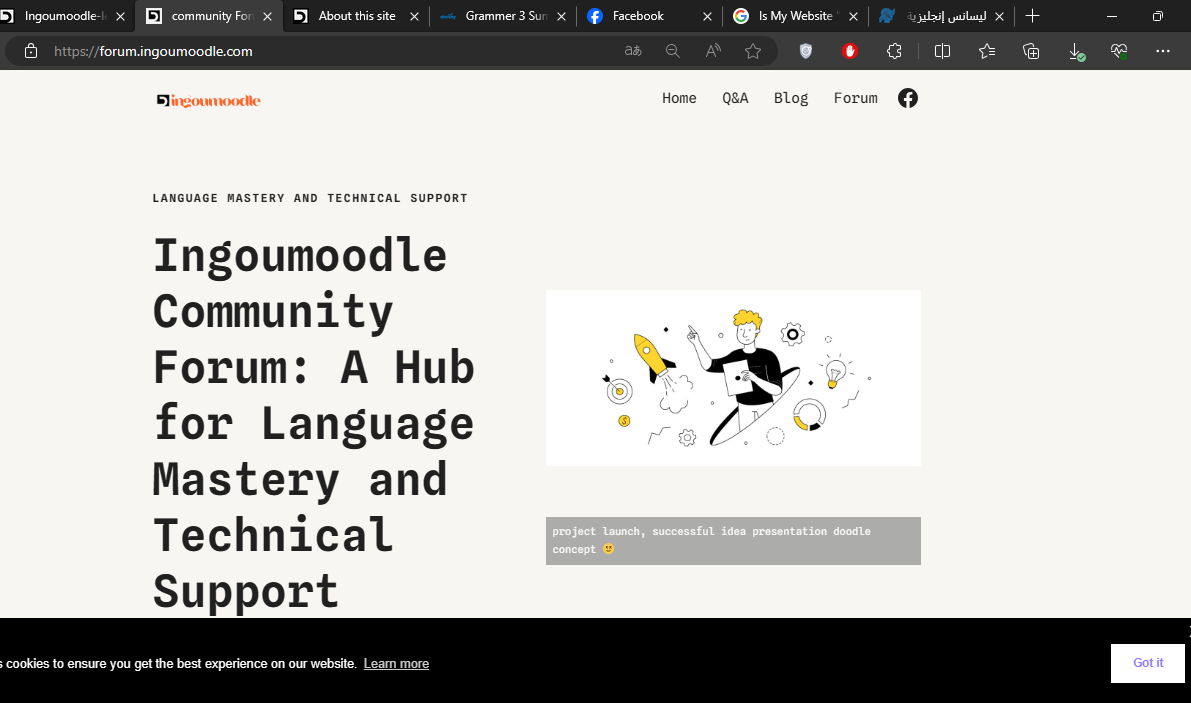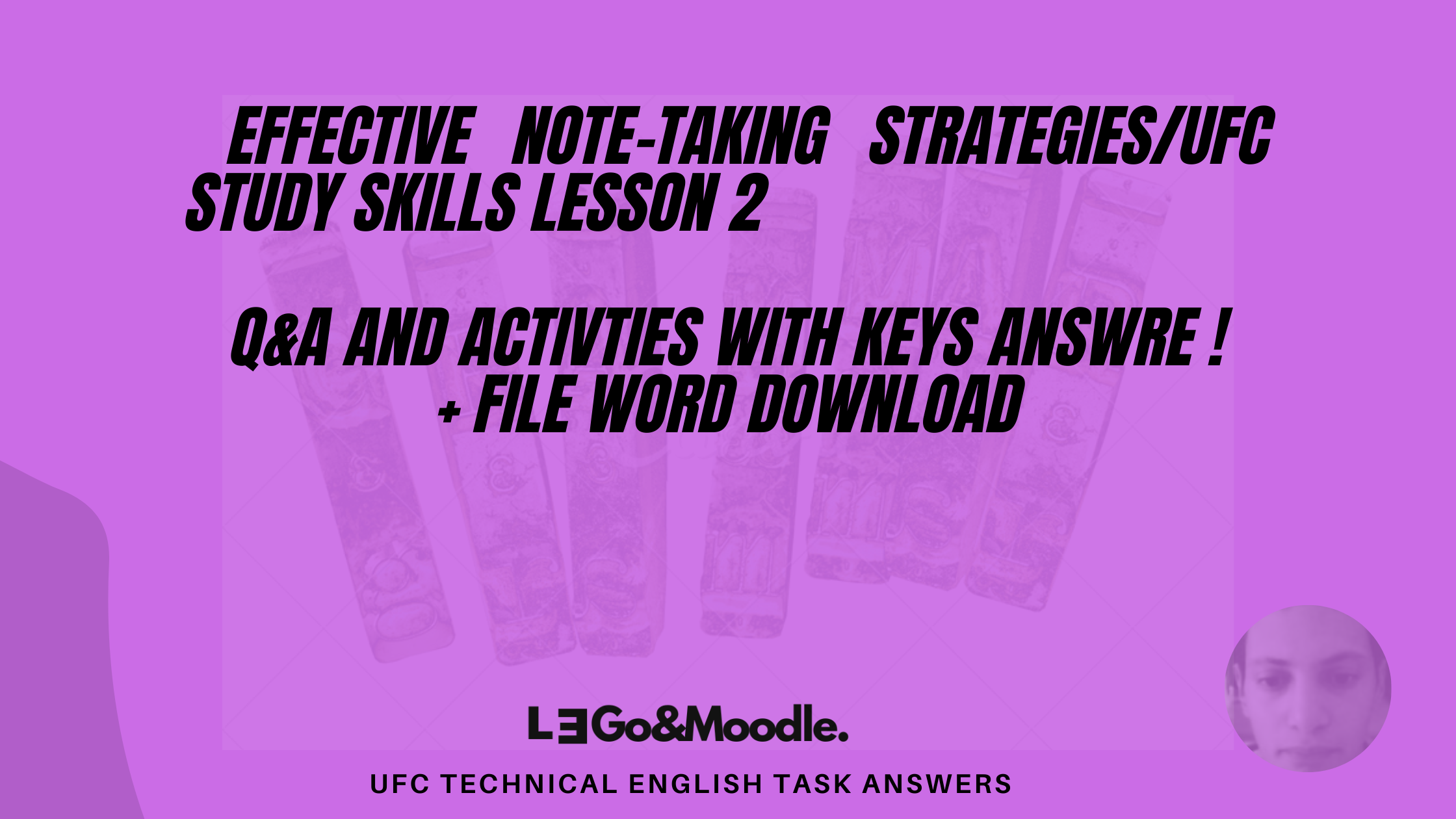Objectives:
- Understand the importance and methods of note-taking.
- Learn about linear vs. non-linear note-taking techniques.
- Explore different note-taking models (Outlining, Sentence Method, Charting).
Materials Needed:
- Whiteboard or digital presentation tool
- Handouts of note-taking techniques
- Example notes for each method
Lesson summary
Introduction (10 minutes):
- Definition: Note-taking is the practice of recording information from various sources. It helps in retaining the essence of information, thereby freeing the mind from having to remember everything.
Types of Note-Taking
- Linear vs. Non-Linear Note-Taking
- Linear Note-Taking: Recording information in the sequence it is received, often in a chronological format.
- Non-Linear Note-Taking: Includes methods like mapping and concept charts, allowing for more flexibility and creativity in organizing information.
- Note-Taking Models
- Outlining: Structuring notes in a logical manner using headings and bullets. Useful for subjects with lots of formulas or graphs.
- Sentence Method: Writing each topic as a short sentence. Suitable for fast-paced lectures.
- Charting: Drawing tables to categorize information (e.g., dates, events, impacts).
- Mapping: Using spatial organization and diagrams to assemble information, such as in mind maps.
- Cornell Notes: Dividing a page into sections for notes, cues, and a summary.
- SQ3R Method: A reading and understanding method involving surveying, questioning, reading, reciting, and reviewing material.
- Guided Notes: Notes provided by lecturers with key points missing, filled in by students during the lecture.
- Card File: Using index cards (or digital equivalents) to organize notes with subject headings or tags.
- Flow Method: Organizing information spatially with connections between ideas, focusing on learning rather than transcription.
Q&A Activities on Note-Taking Techniques
Question: What is the main purpose of note-taking?
A) To memorize information verbatim
B) To record the essence of information
C) To create a detailed transcript of lectures
D) To practice handwriting skills
Correct Answer: B) To record the essence of information
Question: What is a characteristic of linear note-taking?
A) Using diagrams and spatial organization
B) Recording information in the order it is received
C) Dividing notes into columns for cues and summaries
D) Writing each topic as a short, simple sentence
Correct Answer: B) Recording information in the order it is received
Question: Which method involves dividing a page into sections for notes, cues, and a summary?
A) Outlining
B) Mapping
C) Cornell Notes
D) Sentence Method
Correct Answer: C) Cornell Notes
Question: What does the SQ3R method stand for?
A) Survey, Question, Read, Recite, Review
B) Summary, Question, Read, Record, Review
C) Survey, Question, Read, Reflect, Recite
D) Study, Question, Read, Recall, Review
Correct Answer: A) Survey, Question, Read, Recite, Review
Question: Which note-taking method is especially useful for subjects with many formulas and graphs?
A) Charting
B) Outlining
C) Flow Method
D) Guided Notes
Correct Answer: A) Charting
Question: In the Flow Method of note-taking, what is the primary goal?
A) To create a detailed record of the lecture
B) To learn while taking notes
C) To follow a strict structural format
D) To transcribe everything said in the lecture
Correct Answer: B) To learn while taking notes
Dive deeper into the world of effective note-taking techniques! Join our vibrant community where we explore a wide range of study methods, share tips, and provide comprehensive answers to all your questions. https://forum.ingoumoodle.com/

Question: Which note-taking method is especially useful for subjects with many formulas and graphs?
A) Charting
B) Outlining
C) Flow Method
D) Guided Notes
Correct Answer: A) Charting
Question: In the Flow Method of note-taking, what is the primary goal?
A) To create a detailed record of the lecture
B) To learn while taking notes
C) To follow a strict structural format
D) To transcribe everything said in the lecture
Correct Answer: B) To learn while taking notes
Question: What is the primary advantage of the Cornell Note-Taking System?
A) It helps in drawing diagrams.
B) It emphasizes chronological note-taking.
C) It encourages active participation during lectures.
D) It uses a structured format for cues and summaries.
Question: Which technique is best suited for fast-paced lectures?
A) The Mapping Method
B) The Sentence Method
C) The Charting Method
D) The Outlining Method
Question: In the context of note-taking, what does the 'R' in SQ3R Method stand for?
A) Record
B) Recall
C) Review
D) Reflect
Question: What is a significant feature of the Flow Method of note-taking?
A) Strict adherence to chronological order
B) Focus on spatial organization and idea connections
C) Use of a standard template for all subjects
D) Emphasis on using symbols and abbreviations
Question: Which note-taking method involves drawing tables to categorize information?
A) Mapping
B) Charting
C) Sentence Method
D) Cornell Notes
Question: What is the primary benefit of the Outlining Method?
A) It is ideal for visual learners.
B) It helps in organizing notes logically.
C) It is suitable for capturing complex mathematical formulas.
D) It encourages creativity in note-taking.
Question: What does the term 'Guided Notes' refer to?
A) Notes prepared entirely by the lecturer
B) Notes taken by students under guidance
C) Pre-prepared notes with key points missing
D) Notes that follow a specific guide or rule
Question: In note-taking, what is the purpose of the Card File Method?
A) To create visual maps of information
B) To organize notes with subject headings or tags
C) To outline notes in a hierarchical structure
D) To draw diagrams and charts for better understanding
Question: What does the SQ3R Method emphasize in the context of reading and understanding material?
A) Speed and efficiency
B) Creative thinking
C) Depth and active engagement
D) Structural organization
Question: Which note-taking technique is particularly effective for capturing the essence of a lecture without focusing on details?
A) The Linear Note-Taking
B) The Charting Method
C) The Sentence Method
D) The Mapping Method

Check the full answers from the link below







